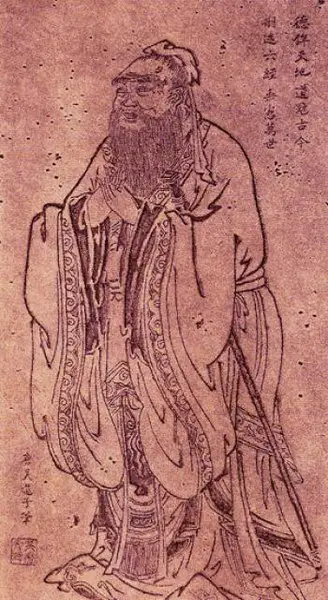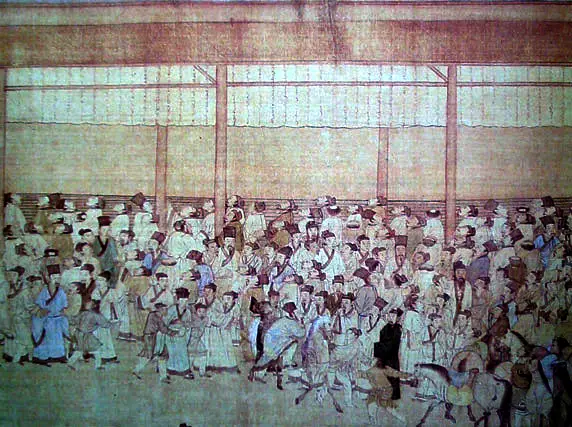Education has been central to life in China for many, many, centuries. Some people believe that education in Ancient China started as early as the sixteenth century BC.
Of course, as was the case for many cultures of ancient times, education was a privilege only rich people could afford. Chinese education developed around some key philosophies and important texts that were unique to China.
Confucius
For many centuries, all education was based on Confucius and his teachings. Learning about Confucianism (teachings relating to the philosopher Confucius) taught you how to be a leader and how to be a gentleman.
Confucius’s writings covered very diverse topics like marriage, history, tea drinking and religion. His scholars also wrote texts used in the Chinese education system. All other writers were in some way influenced by Confucius.

It was believed that peasants did not need to concern themselves with why things happened and that they were just supposed to follow rules. It was the same for women in Ancient China. However, it was thought that to become a gentleman, you had to think a lot about the philosophy of life, learn poetry and know how to speak and write very well. You had to learn all about Confucius’s key texts and pass important exams.
The Civil Service Exam
There was a civil service exam in China that was used from the Han Dynasty (206 BC- 220 BC) until the Qing Dynasty (1644-1912 AD). Schools developed all over China and this exam meant you had to study the key texts of Confucianism in a lot of detail. If a boy passed these exams, he would be very respected and admired and so would his family.
He would be likely to have an important job in the government and to earn lots of money. They were very hard to pass and very few people got through all the rounds.

The Four Books and the Five Classics
Chinese education centred around the Four Books and the Five Classics. Some of these were memorised by scholars in China and countries near China. This would take a long time. The Book of Songs, for example, had over 305 poems!
The Four Books were:
The Great Learning
This was written by Zengzi who was a student of Confucius. This book taught people to have balance in their life and how to behave in a good way according to Chinese standards. It also offered important messages about the best ways to rest your mind to improve your learning. This book also said that everybody had the ability to learn.
The Doctrine of the Mean
This book was written by Confucius’s grandson. Doctrine means a set of beliefs. Among other things, it was about knowing your place in the world. It taught you ways of behaving in your life, whether you were poor, rich a man or a woman. The word ‘mean’ in the title did not mean ‘nasty’, it meant ‘balance.’
Confucian Analects
These texts were the main thoughts of Confucius and his disciples (students). They contained lots of notes and written comments from many writers and thinkers (philosophers). It took 30-50 years to write these, even with so many scholars adding to them.
The Work of Mencius
Mencius was a very important philosopher. He lived between the years 372-289 BC. He thought the individual was more important than the state.

The Five Classics were:
The Book of Poetry (the Book of Songs/the Book of Odes).
This was a book of over 305 poems. They date from the Zhou Dynasty (1046-256 BC) to the middle of the Spring and Autumn period (11th – 7th century BC).
The Book of History.
This book lists all the rulers of China and important events. This book has a lot of controversy surrounding it. Controversy is when something is debated or argued about. The controversy surrounding this book came about because there are many versions of this text which all say different things.
Because this book lists the dynasties and rulers of China, some emperors had parts of the text destroyed or rewritten in a way that might make them seem more powerful or emphasise their best qualities. Certain emperors might also write negatively about other emperors or dynasties too. It is still a very important collection of documents for modern historians.
The Book of Rites.
A ‘rite’ is a ceremony or a ritual. This book describes how rituals were supposed to take place in Chinese culture during the Zhou Dynasty. It describes the royal family and contains texts about rituals and texts about education.
The Book of Changes.
This is a divination text. Divination is when people try to work out the future or unknown events by using certain methods. Some people might use tea leaves or cards to do this. In Ancient China, they used a system using numbers and lines. The numbers were turned into hexagrams.
Hexagrams are six horizontal lines stacked together in different ways. Scholars would read this book to learn how to predict unknown things using this system. People would think they were very clever for knowing all about these signs and their meanings.
The Spring and Autumn Annals.
This book was very important in Chinese education and learning. It is the official chronicle (a written account of historical events) from the State of Lu (722-481 BC). It lists the people who became rulers (accessions), marriages, deaths, funerals of leaders, battles, rituals, natural disasters and events (for example a comet).
All of these texts help us to understand what was important in Ancient China and what people learnt about. They are also documents about the past for historians of China and people who are interested in education during ancient times.